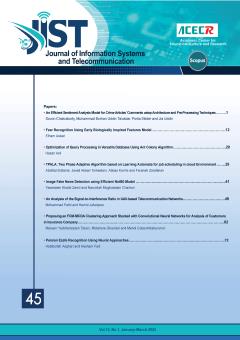Due to the limitations of the natural frequency spectrum, dynamic frequency allocation is required for wireless networks. Spectrum sensing of a radio channel is a technique to identify the spectrum holes. In this paper, we investigate a dynamic cognitive sensor networ
More
Due to the limitations of the natural frequency spectrum, dynamic frequency allocation is required for wireless networks. Spectrum sensing of a radio channel is a technique to identify the spectrum holes. In this paper, we investigate a dynamic cognitive sensor network, in which the cognitive sensor transmitter has the capability of the energy harvesting. In the first slot, the cognitive sensor transmitter participates in spectrum sensing and in the existence of the primary user, it harvests the energy from the primary signal, otherwise the sensor transmitter sends its signal to the corresponding receiver while in the second slot, using the decode-and-forward (DF) protocol, a part of the bandwidth is used to forward the signal of the primary user and the remained bandwidth is used for transmission of the cognitive sensor. Therefore, our purposed algorithm is to maximize the cognitive network transmission rate by selection of the suitable cognitive sensor transmitters subject to the rate of the primary transmission and energy consumption of the cognitive sensors according to the mobility model of the cognitive sensors in the dynamic network. Simulation results illustrate the effectiveness of the proposed algorithm in performance improvement of the network as well as reducing the energy consumption.
Manuscript profile


